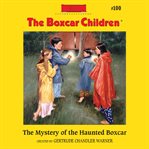Review by New York Times Review
ONCE content to trumpet the classics already on their backlists, children's book publishers have upped the ante, commissioning sequels and prequels to extend time-tested favorites in either direction. A business model that once pertained only to fun fiction series like the Hardy Boys and Goosebumps has gone decidedly upmarket, and so e have a spate of classics-plus. The first thing you notice about the new "Further Tale of Peter Rabbit" is how much larger it is than Beatrix Potter's original 1902 stocking-stuffer. Potter's maxim - "little books for little hands" - summed up her firmly held belief that a children's book ought to be conceived in a way that the young feel it was made for them. By contrast, its modern sequel aims to make the biggest possible splash. The buzz here is given an added boost by the celebrity factor, with the fine British actress Emma Thompson having written this sequel and recorded its companion CD. Thompson, at a minimum, brings high-end Merchant-Ivory credibility to the project (Imagine if Snooki had been behind it.) But is she the ideal Beatrix Potter surrogate? Just what kind of book has she composed? Potter's original "Tale of Peter Rabbit" was a tough-minded adventure story about curiosity and its consequences, and a barbed comic reflection on the rewards and perils of living life by the seat of your pants. As we all well recall, Peter's father was not a quick enough fellow. The widowed Mrs. Rabbit ruefully reminded her children how he got careless one day and wound up being "put in a pie by Mrs. McGregor." Far less is at stake in Thompson's tale, in which what passes for drama comes when, having been accidentally whisked away to Scotland inside a basket, Peter is pressed into playing an ancient hurling game against a champion radish-tosser, described by the author as a "HUGE black rabbit in a kilt." The outcome of the matchup hardly matters, it turns out - not for Peter or for anyone else, and before the reader knows it Thompson herself has made a dash for the exit in a closing line that seems ominously like the promise of a sequel with Benjamin Bunny. While Eleanor Taylor's illustrations bear a fuzzy resemblance to the superlative watercolors that inspired them, they largely lack the clarity, zest and precise knowledge of plant and animal anatomy that give Potter's originals their distinction. Whereas Potter's bunnies gaze sharply at the world, Taylor's stare into space as though wondering why they are there. "The Wind in the Willows" is high on the list of storybook fantasies to which Peter Rabbit fans have traditionally graduated. It, too, celebrates curiosity and the virtues of living by your wits, while also serving up one of children's literature's most exquisite paeans to friendship and the comforts of home. The eclectic narrative (improvised, originally, by Kenneth Graname from a series of bedtime stories and letters to his son) ranges freely from rhapsodic to slapstick, with the latter mood reserved for scenes featuring the fun-loving, hopelessly self-absorbed Mr. Toad. Somehow Jacqueline Kelly has internalized it all, and in "Return to the Willows" she has not only fashioned a witty adventure that is worthy of Grahame, but has done him one better by placing a child character - an agreeably nerdy nephew of Toad's named Humphrey - at the center of the action. Grahame's original cast of characters, by contrast, is a posse of adult males in animal dress, carrying distant echoes of Edwardian literary haunts and watering holes where the author, who by day served as secretary of the Bank of England, found his own companionable riverbank. Running footnotes that archly comment on uncommon words and phrases are a minor irritant, as are Clint Young's notably bloodless illustrations, which portray the principals as soft-focus generic types, rather than characters to care about. Still, it's a welcome surprise to find Toad and friends once more: on the road, in the Wild Wood and best of all, in one another's good company. But you can meet your favorite characters once too often. In the first of Gertrude Chandler Warner's popular "Boxcar Children" series, Henry, Jessie, Violet and Benny Alden are introduced as orphans on the run from the authorities and a distant grandfather. They acquire their nickname by setting up housekeeping in an abandoned railway car in the woods where they demonstrate a degree of self-reliance rivaling that of Robinson Crusoe. Warner, a Connecticut schoolteacher, wrote the first "Boxcar Children" book in 1924 and turned out 18 sequels before the ghostwriters took over, producing dozens more. Now the Newbery Medal winner Patricia MacLachlan has written a prequel that promises to shed light not only on the children's pre-orphan days but also on the circumstances of their parents' passing. THE reader therefore approaches this meticulously crafted tale of hardscrabble American family farm life knowing a terrible fate awaits. The Alden parents prove to be salt-of-the-earth, near-saintly people, and the more we learn about them the sadder their deaths are sure to seem. It's a strange box in which to put all but the most die-hard Boxcar fans. Do children really need to meet the parents, let alone know how they died? It might be argued that the children's preternatural resilience raises the question of the source of that resilience. Might they not have come by it via the shining examples of their mother and father? MacLachlan, for whom family continuity in the face of seemingly insurmountable odds is a favorite theme, responds with a resounding yes. To prove the point, however, she takes the children's rock-solid self-sufficiency to an implausible extreme. Henry, the eldest in particular reacts to news of the deaths with such muted stoicism, it's as though he has been waiting for the awful shoe to drop all along: waiting not merely for bad things to happen to good people, however, but rather for his own too-perfect storybook life to get a tad more real. Leonard S. Marcus's most recent book is "Listening for Madeleine: A Portrait of Madeleine L'Engle in Many Voices."
Copyright (c) The New York Times Company [November 11, 2012]

![The Boxcar children beginning : [the Aldens of Fair Meadow Farm]](https://d2snwnmzyr8jue.cloudfront.net/oas_9781621881186_180.jpeg)


![The true gift : [a Christmas story]](https://d2snwnmzyr8jue.cloudfront.net/sas_9780743597531_180.jpeg)